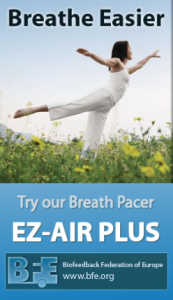ADD/ADHD
Overview
 Attention-deficit/hyperactivity disorder (ADHD) is one of the most commonly diagnosed neurobehavioral disorders of childhood. According to the CDC, the rate of parent-reported ADHD among children 4-17 years of age increased by 22% between 2003 and 2007, from 7.8% to 9.5%. To complicate things, their are several ADHD subtypes that present themselves as different EEG sites and brainwave patterns. In 2012, the American Academy of Pediatrics recognized neurofeeedback as a Level 4 treatment for ADHD – both efficacious and specific.
Attention-deficit/hyperactivity disorder (ADHD) is one of the most commonly diagnosed neurobehavioral disorders of childhood. According to the CDC, the rate of parent-reported ADHD among children 4-17 years of age increased by 22% between 2003 and 2007, from 7.8% to 9.5%. To complicate things, their are several ADHD subtypes that present themselves as different EEG sites and brainwave patterns. In 2012, the American Academy of Pediatrics recognized neurofeeedback as a Level 4 treatment for ADHD – both efficacious and specific.
Education
The BFE offers educational content, presented by a variety of clinicians, related to ADD/ADHD. We invite you to explore the different types of live or recorded presentations. Below is a small selection of available content. Click the following ADHD link to visit the BFE shop and view the available listing based on that keyword.
ADHD Monastra-Lubar Assessment Online Class Recording: learn all about ADHD assessing clients for ADHD using the ADHD Monastra-Lubar Assessment software suite.
Assessment of ADHD Subtypes Webinar Recording: Lindsay Hollmuller reviews the different subtypes of ADD/ADHD, as assessed using qEEG & Z-Score maps.
Attention Problems in Children Webinar Recording: Dr. Swingle discusses the complexities in identifying and treating ADHD, and related conditions, in children.
Biofeedback & Neurofeedback Applications in Sport Psychology Video: In this video, Dr. Michael Linden discusses disorder symptoms presented in athletes, such as ADHD, as well reviews assessment and training techniques used with athletes.
Software
The BFE has worked with many practitioners to encapsulate their different methodologies into BFE software suites for ADHD assessment and/or training. Some of these methods are for ADHD only and others are for a wide variety of disorders that also include ADHD. Click on the links below to learn more about the techniques developed by experts in the field.
ADHD Assessment by Drs. Vincent Monastra and Joel Lubar, with Dr. Francois Dupont
This suite takes the methodology from the hallmark published study Monastra, Lubar, et.al. 1999 and turns it into an easily applicable ADHD assessment for children and adults. All necessary reference material for the assessment tasks is provided with the software, along with norms in an easily generated automated excel report.
For clinicians entering the field of neurofeedback, this represents a very easy tool for conducting an ADHD evaluation.
Setting Up for Clinical Success and Specialized Application Scripts by Dr. Lynda and Michael Thompson
From two of the top leaders in the field biofeedback and neurofeedback, their methodology developed and applied at their ADD Centre in Toronto, was packaged into these two software suites. Applicable to ADHD, including various sub-types, this methodology is also applicable to a wide spectrum of disorders.
ClinicalQ and BrainDryvr by Dr. Paul G Swingle
This method supports techniques developed by Dr. Paul Swingle from over 30 years of practice and teaching in the field of psychology and neurotherapy. His method utilizes a clinical database and includes the use of harmonics for training. Applicable to ADHD, including various sub-types, this methodology is also applicable to a wide spectrum of disorders.
Integrated Neurofeedback by Dr. Francois Dupont
The software suite is used as a neurofeedback tool, following assessment. The suite features simple training sessions for new clinicians or complex integration for experienced therapists. Applicable to ADHD, including various sub-types, this methodology is also applicable to a wide spectrum of disorders.
Passive Infrared Hemoencephalography (pIR HEG) by Dr. Ernesto Korenman
This suite enables the measurement of blood perforation in the frontal part of the brain via the amount of heat given off, which is better know as passive infrared hemoencephalography (pIR HEG). As the frontal lobe works harder, more oxygenated blood is brought to region and the skin surface temperature increases which is what the pIR HEG thermogenic sensors detect. This method is developed and brought to popularity by Jeff Carmen, Ph.D.
Feel free to visit the BFE’s page devoted to HEG
Near Infrared Hemoencephalography (nIR HEG) by Dr. Ernesto Korenman
This suite enables the measurement of blood perforation and oxygenation in the frontal part of the brain via the injection of red and infrared light into the tissue and re-measurement of the amount of light that is reflected back out, which is better know as near-infrared hemoencephalography (nIR HEG). As the frontal lobe works harder, more oxygenated blood is brought to region and the ratio of red to infrared light changes based on the amount of blood present which is what the Meditech nIR HEG sensors detect. This method was developed and brought to popularity by Hershel Toomin, Ph.D.
Feel free to visit the BFE’s page devoted to HEG
Slow Cortical Potentials by Elizabeth Tegan, MS, RN, CS, and Marc Saab of Thought Technology, MEng
This advanced software suite, based on extensive research at the University of Tubingen, enables users to measure and train slow cortical potentials. Applicable to ADHD, the training aim of this technique is to regulate cortical excitation thresholds considered to be impaired in children with attention deficit/hyperactivity disorder. Additionally, the applicability of this suite is also for treatment of migraines, epilepsy and seizures. Extensive published documentation comes included with this software.
Feel free to visit the BFE’s page devoted to Slow Cortical Potentials
Troubled Youth by Linda Walker, MHR, LPC
In this suite, Ms. Walker has shared her eclectic training style and knowledge of a wide variety of biofeedback and neurofeedback therapeutic methods based on her experience working with troubled youth and their families both in the public and private sectors. Her treatment population has notable problems within the education system, due to ADHD and co-morbidities as well as paths marked with trauma from abuse, loss or family chaos.
Learn More…
Expert Opinions
by Michael Thompson & Lynda Thompson, Ph.D.
Do you both believe that EEG Biofeedback (neurofeedback) is useful for ADD/ADHD?
Absolutely! Neurofeedback (another name for EEG biofeedback) gives the individual the ability to recognise for themselves, what their brain is doing, and learn specific skills to improve their performance at school and at work. While working with A.D.H.D. children and adults, we both had an increasing realization that other therapies for children and adults diagnosed with A.D.D./ A.D.H.D. are only a partial solution. The simple use of Ritalin and other pharmaceuticals, even combined with behavioural approaches are limited, because the changes they produce are temporary. It is very clear now that A.D.D. is a neurologically based disorder. Read more…
Neurofeedback by Dr. Joel Lubar
Could you describe your current work?
My current work is primarily the development of databases and training protocols for treating individuals with attention deficit hyperactivity disorders (ADHD) and associated co-morbidities. These include learning disabilities, oppositional and anxiety disorders and other problems that are commonly associated with ADD. I also spent a number of years in my career doing research and treatment of patients with seizure disorders and epilepsy. Read more…
Press Releases
- London Based Community Interest Company Teams Up with Canadian Clinics to Raise Awareness About Neurofeedback and ADHD
- Community Interest Company (CIC) Launches Breathing Software to Raise Awareness of ADHD and Biofeedback to Coincide with the London Olympics
- Neurofeedback Software Provides a Fast and Simple Assessment Method for ADHD in Adults and Children as Young as 5-Years Old



